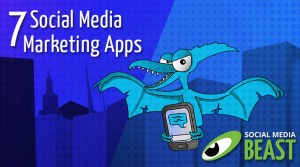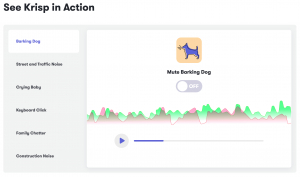It’s the age of Big Data, digital shopping, social media, and mobile marketing. Companies of all sizes are diving into the on-line world to find new data, new opportunities and new ways to grow business.
At the heart of good marketing is data. And when data drives your marketing, the average return on investment (ROI) is a whopping 224%! (VB Insight)
Unfortunately, many small businesses are intimidated when it comes to the concept of using data in creative ways. They feel as if they don’t have the times or resources, or are overwhelmed by the sheer size of so much data or simply, are not sure where to even begin.
However, data is not limited to the big guys. More small and mid-market companies are turning to data-driven marketing to drive business growth.
Here are some great ways to get started:
Link Your Data Together
Most companies have a ton of data at their fingertips and are sitting on a goldmine of opportunities. However, this data is often stored in separate systems. Email, customer service logs, billing and shipping – each of these systems contain important information about your customers.
Your customers are rich sources of information – and by better understanding who they are, you can discover new revenue opportunities.
Begin by taking a look at the data you have at hand. What are they purchasing? Who is a first-time buyer and who buys frequently? What is the amount of their purchases? Be sure to also consider basic information such as age, gender, marital status, and other basic demographic information.
A host of customer relationship management (CRM) software is available for small companies to manage customer records and business data. Many of these solutions are also designed to integrate with the social sites your customers and prospects use.

Create Customer Segments for Targeted Offers
In order to successfully target your customers with the most relevant offers, they should be segmented into groups who share similar characteristics, such as age, gender, lifestyle, and so on.
When creating customer segments, be sure to consider a variety of characteristics, such as:
- Behavioral: characteristics such as product usage and frequency of purchase.
- Demographics: factual characteristics, such as age, gender, occupation, and income. For example, are the majority of your customers female or male? Where do they live? Are they single or married?
- Psychographics: values, attitudes, lifestyles. Psychographic information answers questions such as what motivates your customers to buy your products and services? What are their key values? What are their hobbies and habits?
- Value-Based: actual or potential revenue of customers and the costs of maintaining relationships with them. Analyzing these attributes allows marketers to allocate resources to the most-profitable customer groups.
Based on any combination of these characteristics, companies can develop key customer segments and create offers and messages designed to generate the most profit from each unique customer group. A company may want to enhance loyalty, increase customer value, or provide products and services to a particular geographic area.

Take a look at the following examples:
1) Geographic segmentation
Marketers may create segments based on geographic location, such as neighborhoods, cities, states, regions, or postal codes. A local retailer may want to only target consumers within a certain radius of the store. Or a large retailer selling seasonal products, such as winter coats, will concentrate more marketing efforts on areas with colder weather.
2) Life Stage segmentation
Life stage segmentation requires looking at a combination of demographic and psychographic characteristics to determine where consumers are in their life cycle. Different marketing techniques will appeal to different segments. Targeting a college student will be much different than targeting a young family or senior citizen.
3) Customer-Value segmentation
By creating segments based on transactional history, such as average spend, products purchased and frequency of purchase, companies can devote more resources and create best-in-class offers for their most profitable customers. A bank may want to increase the credit card limit for high-spend, high-value customers. Or an on-line retailer may offer free shipping to profitable customer segments.
4) Buying Frequency segmentation
Creating a segmentation based on buying frequency is good for targeted marketing campaigns, such as re-engaging past customers or rewarding frequent shoppers. For example, by creating a segment of customers who have not purchased in the past six months, a special incentive can be sent to this group.
In the following example, a regional retailer has identified three segments and the marketing strategy for each.

Get Social
If you aren’t getting social with your customers and prospects, it’s time to get on board. Social channels offer a huge opportunity for companies to interact with consumers. Social consumers have the power to influence entire networks of peers, simply by liking a company on Facebook, airing a complaint on a product review forum, or posting a picture on Instagram. Just as important, consumers are actively seeking to engage with their favorite brands through social media sites.
Nearly half (47%) of U.S. social media users today actively seek customer service through social media. Prompt attention to customer complaints, questions or comments on social sites provides a great opportunity to build better customer relationships with social followers.

By building and monitoring your social presence, you can interact with your customers in more personal, one-to-one relationships. For example, a positive customer review on a social forum can instantaneously be rewarded with a free product or redeemable rewards. And just as important, an angry review can quickly be handled and rectified.
Social data contains valuable insights and each of these social interactions should be captured and added to your customer data records or CRM system.
Use Email… Often
Despite growing numbers of new marketing technologies, email marketing is still leading the game. According to the Campaigner Email Marketing Customer Survey Report, 60% of marketers rank email as the leading digital channel for generating marketing ROI.
Just how effective is email marketing? Very! Consumers who receive email marketing spend 83% more when shopping. Their orders are also 44% larger and they order 28% more often. And the investment is well worth it – the average return on email marketing investments is $ 44.25 for every dollar spent.
Remember, your customers don’t want to receive every email offer you have. The top reasons people cite for unsubscribing from email lists are because emails came too frequent and the content wasn’t relevant. To avoid a deluge of unsubscribes, use your customer segments to personalize offers for each group.
Again, it all comes down to the data – collecting as much data as you can on your customers to understand their preferences and to which offers they are most apt to respond.
Getting Started
By starting with the customer data you have at hand, and implementing strategies and solutions such as segmentation, social media, and email marketing, your business will have a strong foundation for growth.
For more great tips, download our data-driven marketing eBook.
What are your thoughts: Has your business gotten started with data-driven marketing? How did you get started?
(196)








